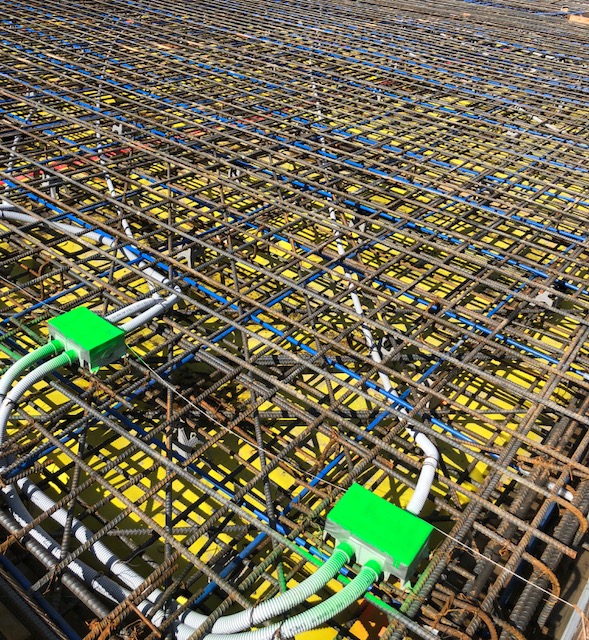Reveal the Transformative Power of Concrete Scanning in Maximizing Effectiveness and Security
Concrete scanning has actually become a crucial tool in the building sector, providing unequaled advantages in boosting project effectiveness and making certain safety requirements. By using innovative modern technology, concrete scanning enables specialists to see past the surface area, revealing hidden complexities that can influence the architectural integrity of a building. The transformative power of concrete scanning lies in its capacity to give real-time information and detailed understandings, changing exactly how jobs are prepared and carried out. As we dig into the complexities of this ingenious method, a world of opportunities opens, showcasing a new age of construction practices that prioritize accuracy and protection.
Relevance of Concrete Scanning
Making certain the structural integrity and safety and security of building and construction jobs starts with the important action of performing complete concrete scanning. Concrete scanning is a non-destructive method utilized to detect and map subsurface aspects within concrete frameworks. This procedure is crucial in recognizing prospective risks, such as rebar, post-tension wires, and channels, that might be hidden within the concrete. By making use of advanced modern technologies like ground-penetrating radar (GPR) and electromagnetic induction, construction teams can properly locate these elements without creating any damages to the structure.
In addition, concrete scanning aids in enhancing job timelines and budget plan by avoiding unexpected costs and delays that might occur due to unexpected obstructions within the concrete. Ultimately, investing in comprehensive concrete scanning is a proactive technique that improves both performance and safety and security in building and construction jobs.
Exactly How Concrete Scanning Functions
Concrete scanning runs as a vital device in building and construction jobs by utilizing advanced modern technologies to spot and map subsurface components without triggering structural damages. Ground Penetrating Radar (GPR) and Electromagnetic Induction (EMI) are 2 key techniques used in concrete scanning.
During the scanning process, the data gathered is assessed in real-time, enabling immediate identification of possible threats or obstacles underneath the surface area. By employing these sophisticated innovations, concrete scanning substantially lowers the danger of expensive problems and injuries on building and construction sites.
Benefits of Concrete Scanning
One of the primary advantages of concrete scanning is the capability to discover and situate embedded items such as rebar, post-tension cable televisions, and avenues properly. Concrete scanning helps in planning and making extra efficiently, as it supplies precise details concerning the area and depth of structural parts.

Study: Concrete Scanning Success

In one more instance, a construction company utilized 3D concrete scanning to assess the problem of aging concrete frameworks in a historical building. The in-depth scans given important understandings right into the level of deterioration and helped prioritize maintenance efforts properly. By proactively resolving areas of issue determined with scanning, the business was able to expand the lifespan of the structure and ensure owner safety and security.
These study emphasize the transformative power of concrete scanning in enhancing effectiveness, precision, and safety in building and construction tasks.
Applying Concrete Scanning in Projects
Executing advanced scanning technologies throughout construction jobs has actually come to be increasingly essential for boosting precision and safety and security. By incorporating concrete scanning right into task preparation and execution, building teams can determine potential threats, such as rebar or post-tension cables, concealed within concrete structures. This positive technique reduces the risk of crashes, hold-ups, and costly rework, eventually causing more efficient project timelines and spending plans.
To execute concrete scanning efficiently, project managers should collaborate closely with knowledgeable scanning experts to identify the most ideal scanning methods for the particular project demands. Engaging scanning specialists from the early phases Bonuses of a project makes it possible for the group to produce extensive scanning plans that resolve key locations of problem and make certain complete data collection.
In addition, integrating concrete scanning into regular task process can enhance decision-making processes, as real-time check information supplies immediate insights into the condition of concrete structures - Concrete Scanning. This data-driven strategy facilitates notified problem-solving and allows teams to make adjustments promptly, fostering a society of performance and safety and security throughout the task lifecycle

Conclusion
To conclude, concrete scanning plays a crucial role in improving effectiveness and safety and security in construction projects. By utilizing sophisticated technology to map and find out underlying frameworks within concrete, this process aids to stop expensive blunders, ensure structural honesty, and minimize dangers on site. With the capability to uncover hidden aspects and provide accurate information, concrete scanning confirms to be a useful tool for maximizing job results and making the most of total success.
Concrete scanning is a non-destructive method made use of to discover and map subsurface elements within concrete frameworks. Furthermore, concrete scanning assists in enhancing job timelines and budget plan by avoiding unforeseen prices and hold-ups that may occur due to unanticipated blockages within the concrete. One noteworthy instance study includes a large remodelling job where concrete scanning played a vital role in Go Here making certain project success.In one more situation, a building and construction company used 3D concrete scanning to examine the condition of maturing concrete frameworks in a historical building. By incorporating concrete scanning right into job preparation and implementation, building groups can determine prospective dangers, such as rebar or post-tension cords, hidden within concrete structures.